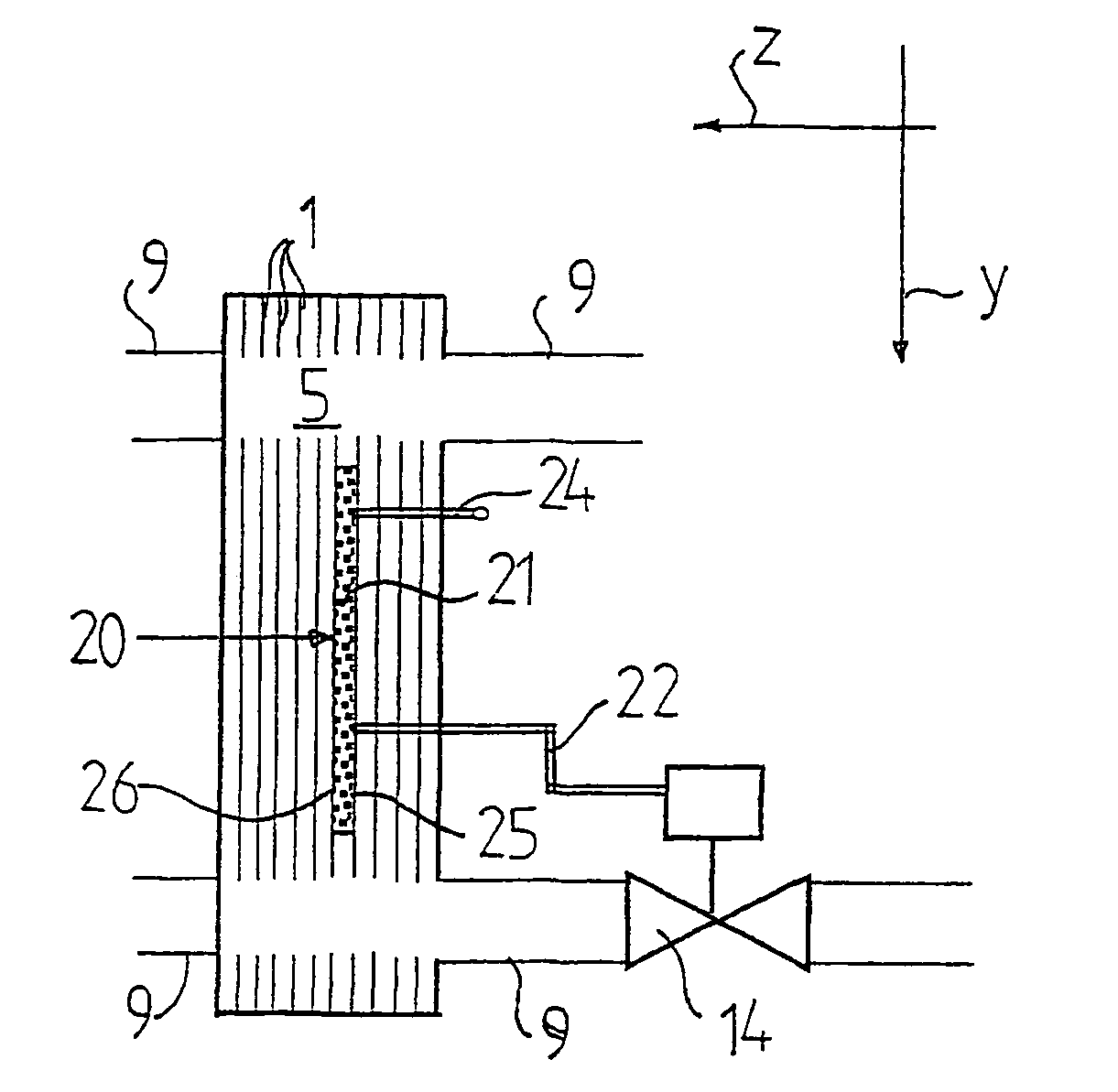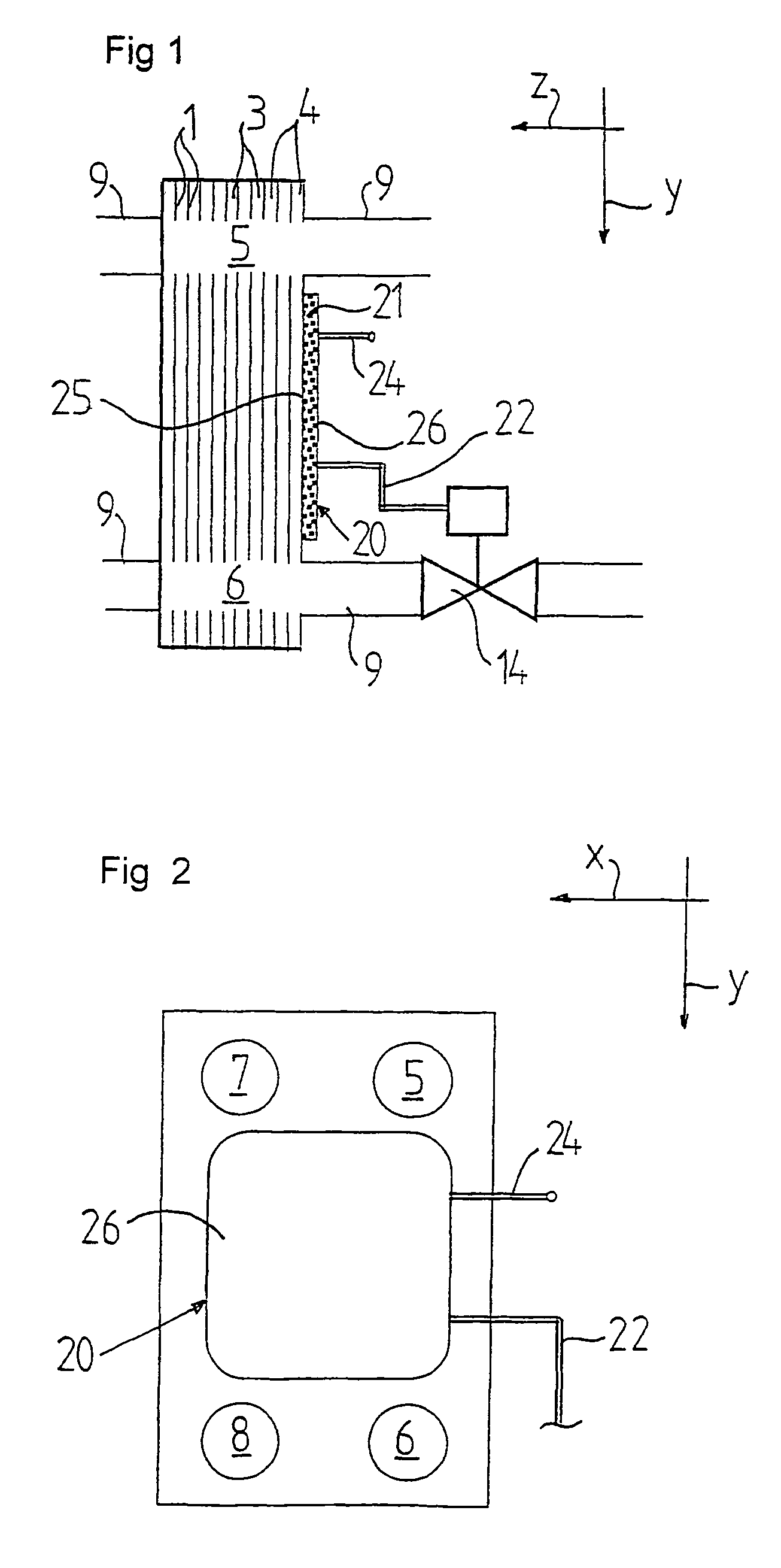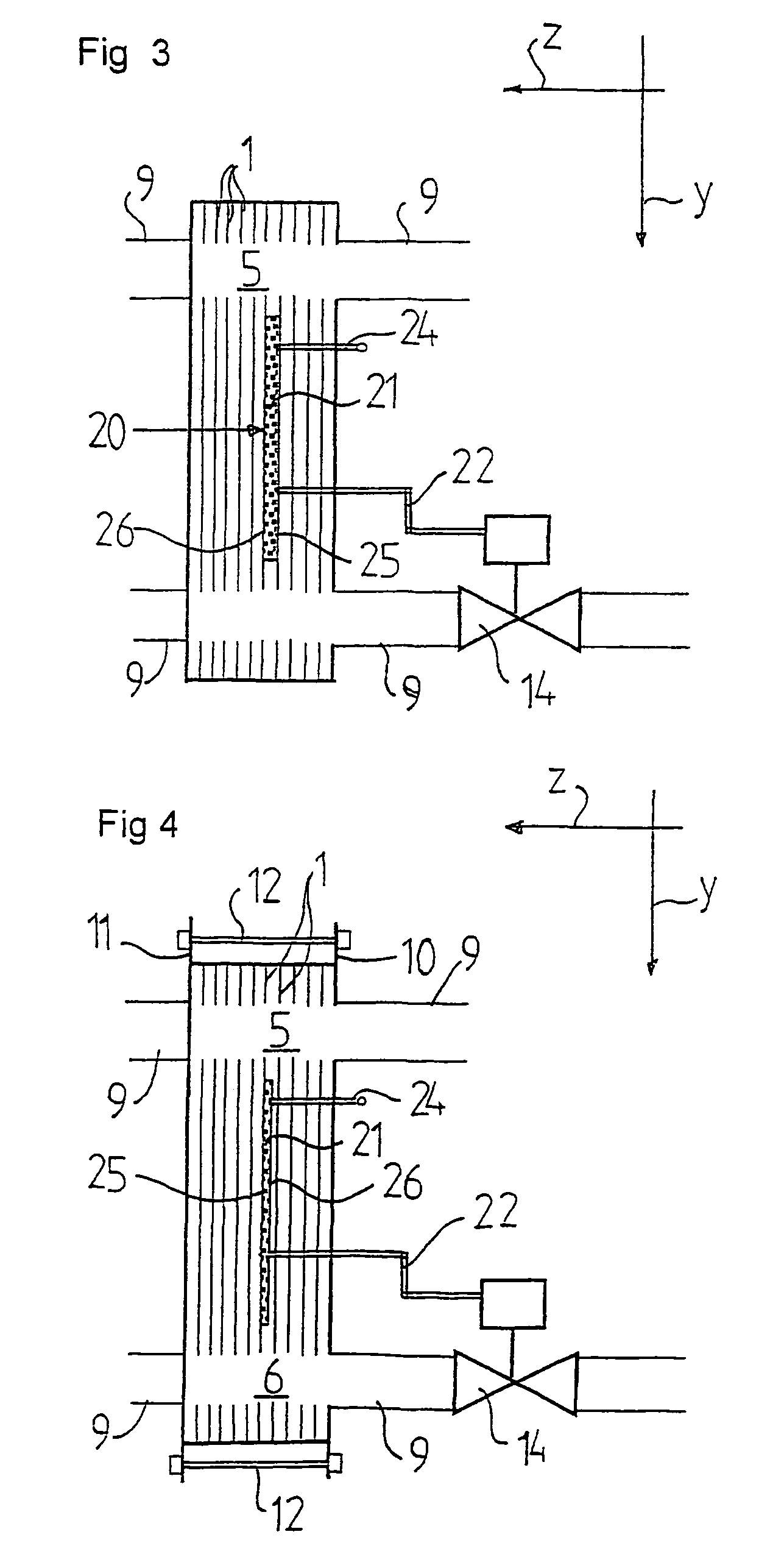Plate heat exchanger
a heat exchanger and plate technology, applied in the field of plate heat exchangers, can solve the problem of difficult manufacturing of such a separate sensor
- Summary
- Abstract
- Description
- Claims
- Application Information
AI Technical Summary
Benefits of technology
Problems solved by technology
Method used
Image
Examples
first embodiment
[0026]FIGS. 1 and 2 disclose a plate heat exchanger according to the invention. The plate heat exchanger includes a number of heat transfer plates 1, which form a plate package. The heat transfer plates 1 are pressed to such a shape that, when they are arranged beside each other to said plate package, a plate interspace is formed between each pair of plates 1. The plate interspaces are arranged to form first passages 3 for a first fluid and second passages 4 for a second fluid. The first passages 3 are separated from the second passages 4.
[0027]Furthermore, the plate heat exchanger includes four porthole channels 5, 6, 7, 8, which extend through all plates 1, wherein two of the porthole channels communicate with the first passages 3 and two of the porthole channels communicate with the second passages 4. It is to be noted that the plate heat exchanger according to the invention also may be of a type, which has 2 or 6 porthole channels. Each porthole channel 5–8 is formed by an openi...
fourth embodiment
[0040]FIGS. 5–7 disclose the invention where the closed space 21 extends in the direction z, i.e. transversally through the heat transfer plates 1. In the embodiment disclosed in FIG. 5, the space 21 extends through all heat transfer plates 1 except for the end plates 10, 11. The closed space 21 is in this embodiment substantially completely defined merely by plates 1. Each plate 1 includes a hole, which is defined by an edge portion 30 extending around the hole. The edge portion 30 may be bent from the extension plane of the plate 1 and form a collar or flange 31 extending around the hole. The edge portions 30 and the flanges 31 are formed in such a way that they abut sealingly another plate 1. The edge portions 30 may thus be produced in connection with the manufacturing of the plate 1 by means of a pressing operation. The edge portion 30 and the flange 31 then form the edge on a depression and the hole may be made in the depression during the pressing operation proper or in a sub...
PUM
 Login to View More
Login to View More Abstract
Description
Claims
Application Information
 Login to View More
Login to View More - R&D
- Intellectual Property
- Life Sciences
- Materials
- Tech Scout
- Unparalleled Data Quality
- Higher Quality Content
- 60% Fewer Hallucinations
Browse by: Latest US Patents, China's latest patents, Technical Efficacy Thesaurus, Application Domain, Technology Topic, Popular Technical Reports.
© 2025 PatSnap. All rights reserved.Legal|Privacy policy|Modern Slavery Act Transparency Statement|Sitemap|About US| Contact US: help@patsnap.com



